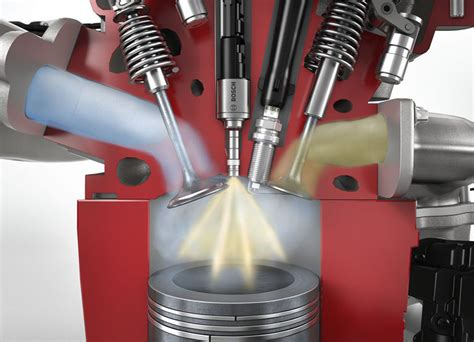Posted on 11/16/2023

We should first start with “What makes direct fuel injection different from other forms of fuel injection?” Fuel injection systems in gasoline engines have evolved over the years due to the constant search for increased fuel economy and reduced exhaust emissions. Many of the improvements coincide with the increased computing power of the Engine Control Module (ECM) aka engine computers. Beginning early in the ‘80s, Throttle Body Fuel Injection (TBI) was introduced as a more precise way to deliver fuel compared to carburation. TBI systems boasted improved cold starting, better throttle response, improved power, and the ability to adapt to different elevations and operating conditions. TBI systems use one to four fuel injectors in a central location in the intake manifold and the fuel is drawn into each cylinder when the intake valves open. The next step in fuel delivery was Port Fuel Injection (PFI), which moves the fuel injectors closer to the intake valve of each cyl ... read more
Posted on 8/4/2023

Active Fuel Management (AFM) is General Motors version of a cylinder deactivation system. Cylinder deactivation is used to increase fuel economy of higher displacement engines while cruising down the highway in light load conditions when the extra power is not needed. During light load conditions the PCM (Powertrain Control Module) can shut down predetermined cylinders by disabling the camshaft lifters and shutting off the fuel injectors. Which prevents those cylinders from consuming incoming air and fuel. Thereby reducing fuel consumption. Think of it this way. First, you give your teenager a soft drink with a large straw. The pop consumption will increase. Now if you give the same kid the soft drink with a tinny tiny coffee straw the pop consumption will decrease. Why not just keep it simple and install small engines in all vehicles? Well, a four-cylinder engine in your pick-up or large SUV would leave you craving additional power when accelerating. Add a trailer to that same vehicl ... read more
Posted on 7/6/2023

Flex Fuel Vehicles Many modern vehicle manufacturers offer models that can run on multiple fuel options, a.k.a Flex Fuel Vehicles (FFV). Flex fuel vehicles are vehicles that have engines designed to run on fuel ranging from regular gasoline to higher, ethanol content fuels like E85 and E15. How do you know if your vehicle is rated for flex fuel? Look for a yellow fuel fill cap, a yellow tag around a capless system, badges on the side of the car, or in the vehicle owner’s manual. Only run the higher ethanol content fuels in vehicles designed for flex fuel. Although most 2001 and newer vehicles can be operated safely on the low-level ethanol 87-octane fuel that contains up to 10% ethanol. Using ethanol blended fuel in older vehicles and small engines, like lawn mowers, can cause damage to some fuel system components. It is best to use non-ethanol fuels in these vehicles and equipment. What is ethanol? Ethanol is an ethyl alcohol fuel source distilled down from mostly corn. The sam ... read more
Posted on 5/4/2023

VVT (Variable Valve Timing) and VVL (Variable Valve Lift) Systems Many modern vehicle manufacturers incorporate VVT (Variable Valve Timing) and/or VVL (Variable Valve Lift) systems in their engines to gain maximum fuel efficiency while maintaining power output and smooth engine operation. To understand how this technology benefits the driver, we need to understand the basics of engine operation. A vehicle engine is essentially an air pump that controls the explosion from a fuel/air mixture and transfers the explosion energy into rotating movement. Thus, propelling the vehicle forward. Nearly all vehicle engines use the four stroke, Otto engine design. See illustration. The valves control the flow of air/fuel into the cylinder and the exhaust out of the cylinder once the combustion process takes place. They must be timed to open and close at precisely the correct points of crankshaft rotation to maintain engine op ... read more
Posted on 5/8/2015
The last new American cars sold in Albert Lea with a carburetor rolled out of the MN dealerships in 1990. Since then, all new vehicles here in Albert Lea and nationally have had fuel injectors. In very simple terms, a fuel injector is a valve that squirts fuel into your engine. Your engine control computer tells the fuel injector how much gas to deliver as well as the precise time it should be delivered. Of course this happens thousands of times a minute. Fuel injectors deliver fuel far more precisely than carburetors. That translates into better gas mileage and more power for Albert Lea motorists. Virtually all fuel injectors for gas engines are known as port fuel injectors because they deliver the fuel to a port just outside the cylinder. Port fuel injectors operate at about 40 to 80 pounds per square inch of pressure. A few car makers have introduced gas direct injection systems on some engines recently. These systems inject the gas directl ... read more